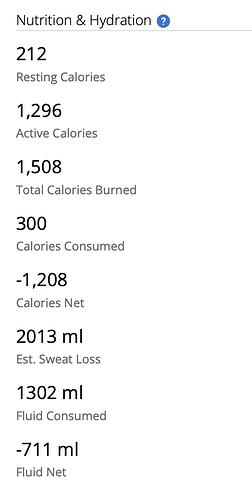right. Here is a 2+ year old ride recorded on 530, synced to TrainingPeaks, and I downloaded the TP version and loading in FitFileViewer:
Field 177 is calories consumed
Field 179 is fluid consumed
This is Garmin Connect view showing the same 300 calories consumed, and 1302 ml fluid consumed:
In case is wondering why I consumed so little, I ate a big carb lunch about 2 hours before and a carb centric dinner immediately after the ride.

